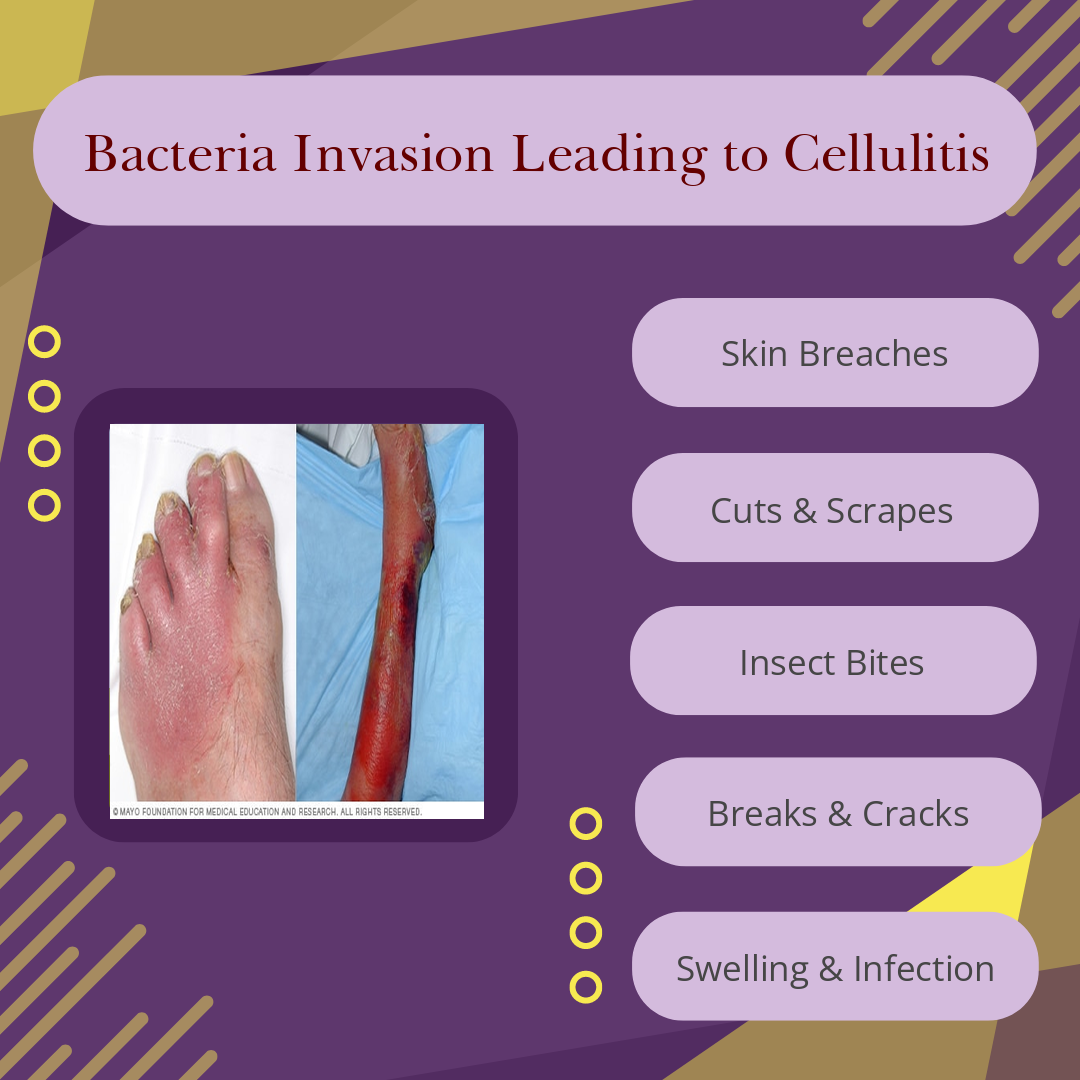Cellulitis is a common bacterial infection that affects the skin and tissues beneath. While not widely discussed, this condition can have a significant impact, particularly in countries like India, where access to healthcare varies greatly. Globally, cellulitis affects millions, emphasizing the need for greater awareness. This awareness helps individuals recognize risk factors and symptoms early on, seeking timely intervention can prevent complicated outcomes. With increasing cases, particularly in regions with warm climates and dense populations, knowing more about cellulitis is crucial for everyone.
Decoding Cellulitis: What It Is And How It Affects You
Cellulitis occurs when bacteria, often through a break in the skin, invade the deeper layers. Imagine how water seeps into a crack and spreads under the surface—that’s how bacteria enter and cause swelling. Common places for bacteria entry are cuts, scrapes, or even insect bites. Think of your skin as a wall that bacteria tries to breach—tiny breaches become gateways. Understanding how these minor injuries turn into a cellulitis case helps in prevention. A basic grasp of this will make handling it less daunting when it does occur.
Causes and Triggers
Two main types of bacteria, Streptococcus and Staphylococcus, are often involved in cellulitis. In India, factors like humid climate and crowded living spaces can increase cellulitis cases. For instance, minor foot injuries, coupled with poor sanitation, might easily escalate into cellulitis. Imagine being in a packed festival where getting bumped and scraped is common—such situations can escalate cellulitis cases if not promptly addressed. Recognizing these common causes helps mitigate risks and promotes safer practices.
Recognizing Risk Factors Associated with Cellulitis
Several risk factors make people more prone to cellulitis:
- Skin injuries: Cuts, blisters, and abrasions.
- Immune system issues: Conditions like diabetes weaken defenses.
- Chronic skin conditions: Such as eczema or athlete’s foot.
In India, factors like crowded areas and unhygienic surroundings further elevate risks. It’s vital to detect symptoms swiftly, especially in high-risk groups like elderly people and children. Early recognition can make a significant difference in outcomes.
Spotting the Symptoms Early On
Primary symptoms of cellulitis include:
- Swelling
- Redness
- Pain
- Warmth in the affected area
If you experience severe symptoms like fever, it’s crucial to seek medical attention immediately. Cellulitis can appear anywhere on the body, but the legs are common sites. Imagining this condition as a fire on your skin can help visualize its symptoms, urging quicker response and medical advice to contain it.
Effective Diagnosis
Diagnosing cellulitis involves:
- Medical examination of the skin.
- Asking the patient about recent injuries or symptoms.
Differentiation is crucial as other conditions can mimic cellulitis. Ensuring accurate diagnosis means seeking a healthcare professional who’s experienced with similar skin conditions. Early and correct diagnosis leads to effective treatment, vastly improving recovery prospects.
Treatment Options in India: Modern & Traditional
When it comes to cellulitis treatment in India, options range from modern to traditional. Antibiotics are often prescribed for bacterial infections. However, alternative medicine like homeopathy also holds sway among some communities. India’s rich heritage offers herbal solutions too. Consulting a doctor for personalized treatment is advisable. On a broader spectrum, maintaining hygienic practices complements all treatments, mitigating infection risks.
The Socio-Economic Impact of Cellulitis
Cellulitis affects daily life significantly. It can disrupt work and social activities, impacting productivity and earnings, especially in Indian society. Healthcare expenses can be daunting, particularly when accessing treatments becomes challenging due to socioeconomic factors. Balancing these impacts involves community awareness and healthcare reforms.
The Future of Cellulitis Treatment: Emerging Research
Research continues to break new ground in cellulitis treatment. Scientific advancements aim to improve early detection and treatment efficacy. International studies can bring these innovations to India, enhancing the available healthcare system. Sharing such knowledge benefits communities and prompts better healthcare policies.
Instilling Preventative Measures to Beat Cellulitis
Preventing cellulitis involves:
- Proper wound care
- Regular personal hygiene
Dispelling myths about prevention is crucial. It’s not just about applying turmeric; understanding what truly works is vital. Simple hygiene and careful wound management can profoundly reduce risks, particularly in Indian settings where misconceptions might persist.
Understanding the Psychological Toll
Living with cellulitis can influence mental health due to its visible nature. Stress and self-consciousness are common. Offering resources for mental health and encouraging support groups can assist those affected. Helping individuals manage stress with simple strategies also fosters resilience.
Dispelling Myths & Misconceptions
Cellulitis is surrounded by myths, like it being contagious. Educating the public helps dispel such beliefs. Empowering individuals with factual knowledge enables them to approach the condition confidently, reducing fear and steering them toward appropriate solutions.
Conclusion
Understanding cellulitis involves recognizing signs and seeking prompt treatment. Simple preventive measures and awareness play a key role in management. The knowledge shared here encourages proactive approaches to prevent, recognize, and treat cellulitis, fostering better health outcomes.


